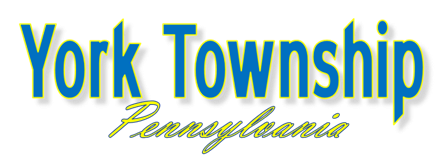After the Storm Video
After the Storm – Environmental Protection Agency 2006 – EPA 841-C-06-001 – After the Storm: Co-Produced by the U.S. EPA and The Weather Channel. The show highlights three case studies—Santa Monica Bay, the Mississippi River Basin/Gulf of Mexico, and New York City—where polluted runoff threatens watersheds highly valued for recreation, commercial fisheries and navigation, and drinking water. Key scientists and water quality experts, and citizens involved in local and national watershed protection efforts provide insight into the problems as well as solutions to today’s water quality challenges. After the Storm also explains simple things people can do to protect their local watershed-such as picking up after one’s dog, recycling household hazardous wastes, and conserving water. The program is intended for educational and communication purposes in classrooms, conferences, etc.
Floodplain Management Is Good For Your Budget
PHILADELPHIA, Pa. — As the spring flooding season approaches, the Region III office of the Federal Emergency Management Agency (FEMA) reminds everyone to include a key ingredient in their household’s flood safety plan—flood insurance. Flooding is the most costly disaster in the United States. Common flooding misconceptions, oversights and myths can lead to (or compound) disaster. As such, the following are a few myths FEMA wants to dispel in its ongoing effort to help protect lives and property:
From FEMA Web News
Download ‘Floodplain Management Is Good For Your Budget‘ (PDF)
Lawn Fertilizers, Herbicides, & Pesticides
Fertilizers applied at the wrong times or at excessive rates: are washed off lawns by rain storms, are carried by storm flows along streets and through stormwater pipes, are discharged into streams, and find their way into the Chesapeake Bay. In the Bay those fertilizers promote algae growth, depleting oxygen, and killing fish, crabs, and other aquatic life.
For more information download ‘Lawn Fertilizers, Herbicides, and Pesticides‘ (PDF)
Low Impact Design (LID) Brings Stormwater Best Management Practices (BMPs) Curbside
Select the following link for information on Low Impact Design (LID) Brings Stormwater Best Management Practices (BMPs) Curbside. Call the Engineering Office at the township administration office for additional information regarding LID’s.
Download ‘Low Impact Design Brings Stormwater Best Management Practices Curbside‘ (PDF)
On-Lot Septic Systems & Their Operation & Maintenance
On June 19, A presentation of “This OLDS House” was made to home owners with on-lot sanitary sewage systems. This program was presented by the York County Conservation District, Penn State and Young’s Sanitary Septic Services.
Download On-Lot Septic System Program Information (PDF)
Pervious Pavement: A different way to manage stormwater
Pennsylvania’s stormwater management regulations and the Chesapeake Bay Watershed Program changed how we are required to manage stormwater. The attached article introduces Pervious Pavement as one of a type of stormwater management facilities (Best Management Practices, BMPs) that one may see being installed.
Download Pervious Pavement Information (PDF)
Rain Gardens: A different way to manage stormwater.
Pennsylvania’s stormwater management regulations and the Chesapeake Bay Watershed Program changed how we are required to manage stormwater. The attached article introduces Rain Gardens as one of a type of stormwater management facilities (Best Management Practices, BMPs) that one may see being installed.
Download Rain Garden Information (PDF)
Restaurants & Food Services: Good Cleaning & Water Quality Practices
CLEAN STREAMS are important to York Township. Food wastes, fats, greases, and oils from restaurants and food service facilities can cause sanitary sewer line blockages that may result in sewage overflows into your restaurant or food service facility. Also, food wastes, fats, greases, and oils that are poured or hosed onto paved areas and streets or into gutters or storm drains pollute our streams.
Download Restaurants & Food Services Good Cleaning & Water Quality Practices Information (PDF)
US EPA Hazardous Materials Storage
Download EPA Hazardous Materials Storage (PDF)
US EPA Materials Management
Download EPA Materials Management (PDF)
US EPA Protecting Water Quality from Urban Runoff
In urban and suburban areas, much of the land surface is covered by buildings and pavement, which do not allow rain and snowmelt to soak into the ground. Instead, most developed areas rely on storm drains to carry large amounts of runoff from roofs and paved areas to nearby waterways. The stormwater runoff carries pollutants such as oil, dirt, chemicals, and lawn fertilizers directly to streams and rivers, where they seriously harm water quality.
Download Protecting Water Quality from Urban Runoff Information (PDF)
